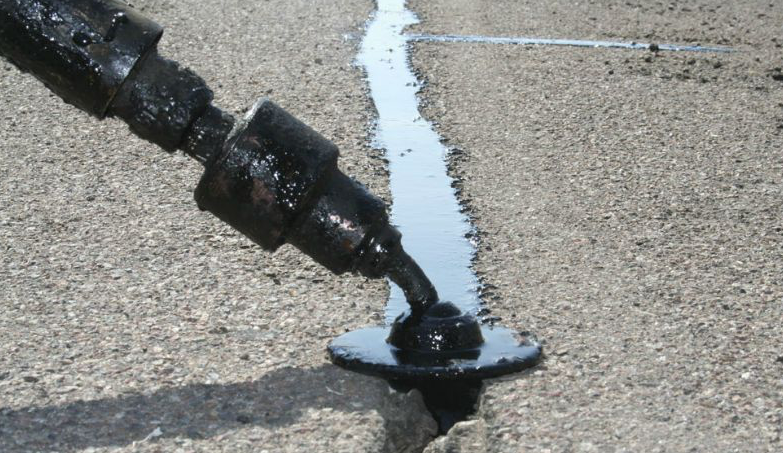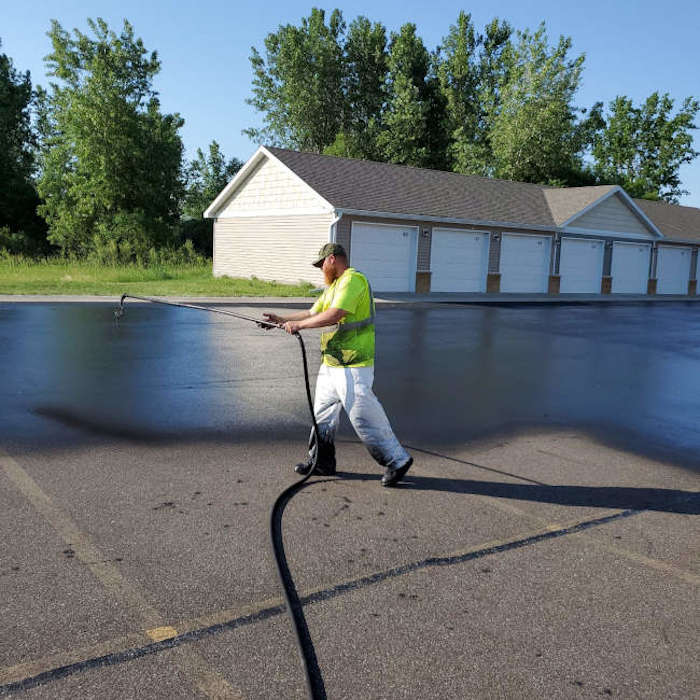Maximize Resilience: Hot Mix Asphalt Sealing for Angled Parking Structures
Maximize Resilience: Hot Mix Asphalt Sealing for Angled Parking Structures
Blog Article
Warm Mix Asphalt: A Lasting Remedy for Sidewalk
Warm Mix Asphalt (HMA) has emerged as a leading sustainable option for pavement solutions, offering a myriad of cutting-edge modern technologies and ecological benefits. Its ability to recycle products and lower power usage provides an engaging case for its fostering in road construction jobs. In addition, the long-lasting performance and longevity of HMA make it a recommended alternative for facilities development. As the need for green building practices expands, checking out the nuances of HMA's sustainability can give useful insights right into the future of pavement remedies.
Ecological Benefits of Warm Mix Asphalt

Moreover, Hot Mix Asphalt assists to minimize urban warmth island effects. Its dark color soaks up sunlight, minimizing the quantity of heat showed back right into the atmosphere contrasted to lighter-colored sidewalks. This can lower ambient temperatures in city locations, decreasing the need for cooling and ultimately minimizing power consumption.
On top of that, Warm Mix Asphalt adds to improved stormwater management. Its porous nature allows water to infiltrate the pavement and charge groundwater products, minimizing drainage and the threat of flooding. These ecological advantages make Warm Mix Asphalt a lasting selection for leading roadways and freeways.
Power Performance in HMA Manufacturing
Is energy performance an essential aspect in the production of Hot Mix Asphalt (HMA)? Power plays a significant duty in the production of HMA, impacting both price and ecological sustainability. One vital element of power effectiveness in HMA production is the usage of cozy mix asphalt (WMA) modern technologies.
Moreover, innovations in plant technologies have actually led to even more energy-efficient HMA manufacturing processes. By enhancing power use in HMA production, the market can minimize its carbon impact while maintaining premium sidewalk products.
Recyclability of Warm Mix Asphalt
The recyclability of Hot Mix Asphalt (HMA) is a critical element of its sustainability and lasting ecological impact. HMA is one of the most recycled products in the USA, with over 100 million loads of recovered asphalt sidewalk (RAP) being recycled each year in new pavement construction. Recycling HMA uses numerous ecological advantages, such as reducing the need for virgin materials, lowering energy consumption during production, and decreasing the amount of waste sent to landfills.
The process of recycling HMA includes milling the existing sidewalk, squashing it into smaller sized items, and mixing it with brand-new accumulation and asphalt binder to create a recycled mix. Overall, the recyclability of HMA plays a substantial function in promoting lasting methods within the sidewalk market.

Long-Term Efficiency of HMA
Asphalt pavements show resilience and durability over a prolonged period, reflecting the long-term performance of Hot Mix Asphalt (HMA) The longevity of HMA can be credited to its click here to find out more ability to withstand rush hour loads, severe weather, and the results of aging. Researches have actually revealed that well-designed and appropriately built HMA pavements can last for 20 years or even more with normal maintenance. The key to taking full advantage of the long-lasting performance of HMA exists in making use of top notch materials, following ideal techniques in building, and executing effective upkeep approaches. Correct drain, routine inspections, and prompt fixings are necessary for maintaining the structural integrity of HMA sidewalks over time. Additionally, advancements in HMA modern technology, such as the use of polymer-modified binders and cozy mix asphalt, have further basics boosted the toughness and longevity of HMA sidewalks. By prioritizing top quality building and construction and maintenance techniques, HMA remains to show itself as a sustainable and cost-efficient service for durable pavement framework.

HMA: Sturdiness and Sustainability
Demonstrating both longevity and sustainability, Hot Mix Asphalt (HMA) has actually ended up being a keystone in the building of resilient sidewalk infrastructures - commercial parking lot paving. HMA's toughness stems from its capability to withstand heavy lots, severe go now climate conditions, and high web traffic quantities, making it a reputable selection for streets, freeways, and airport runways. The make-up of HMA, which typically includes accumulations, binder, and filler, plays an essential function in enhancing its durability and resistance to tear and wear
Furthermore, HMA's sustainability depends on its recyclability and energy-efficient manufacturing process. The capability to recycle redeemed asphalt sidewalk (RAP) in new HMA mixes minimizes the need for virgin materials and reduces the environmental effect of sidewalk building and construction and maintenance. Additionally, the energy effectiveness of generating HMA exists in its reduced mixing temperatures compared to various other sidewalk products, causing lowered power intake and greenhouse gas emissions.
Conclusion
In conclusion, warm mix asphalt (HMA) uses a sustainable solution for sidewalk with its eco friendly characteristics. HMA's recyclability, power effectiveness in production, and long-term durability make it an eco-friendly choice for roadway building and construction.
HMA is one of the most recycled materials in the United States, with over 100 million tons of redeemed asphalt pavement (RAP) being recycled every year in new sidewalk building.The procedure of reusing HMA includes milling the existing sidewalk, crushing it right into smaller items, and mixing it with brand-new aggregate and asphalt binder to develop a recycled mix.Asphalt sidewalks demonstrate toughness and resilience over an extensive period, mirroring the long-lasting efficiency of Hot Mix Asphalt (HMA) Additionally, developments in HMA technology, such as the usage of polymer-modified binders and cozy mix asphalt, have actually even more boosted the toughness and longevity of HMA pavements. The capacity to reuse recovered asphalt pavement (RAP) in brand-new HMA combinations decreases the need for virgin materials and minimizes the ecological impact of pavement construction and upkeep.
Report this page